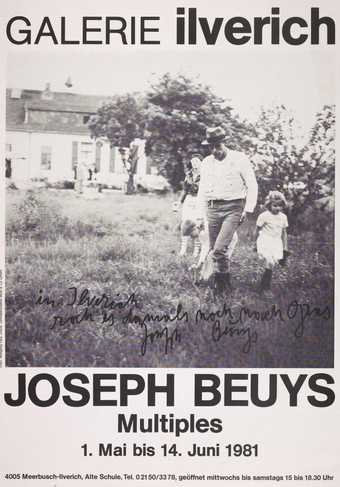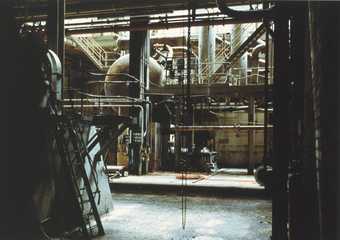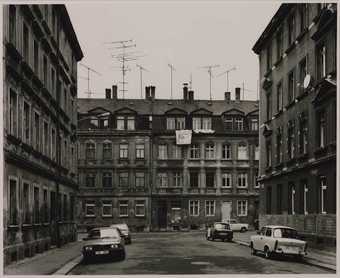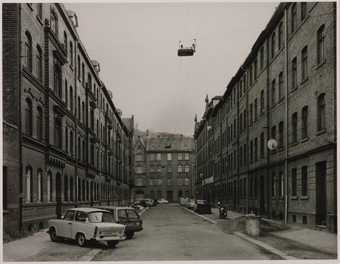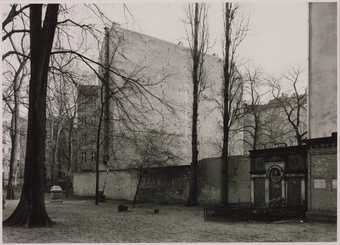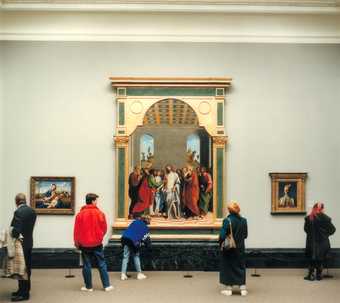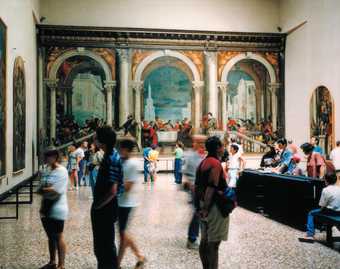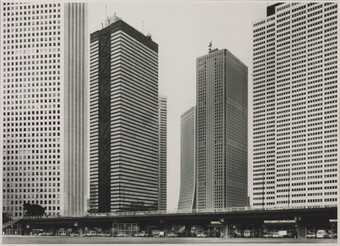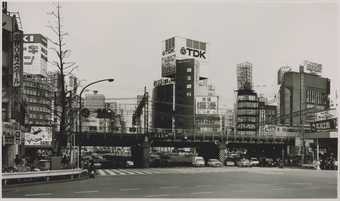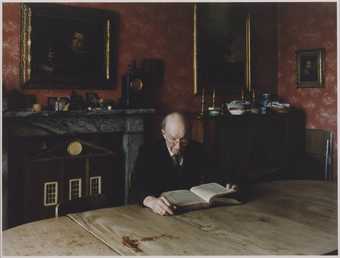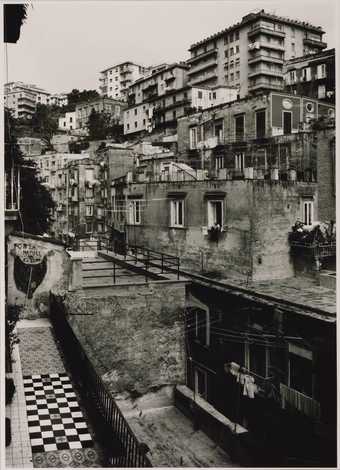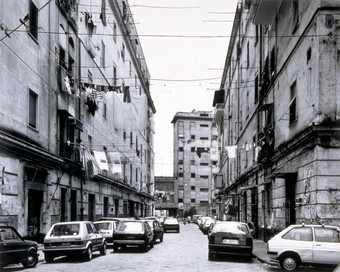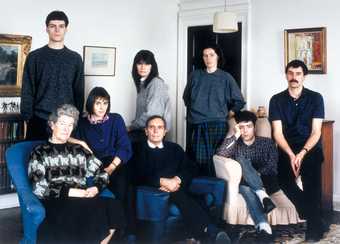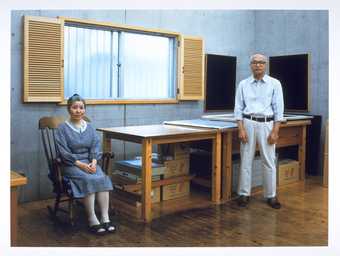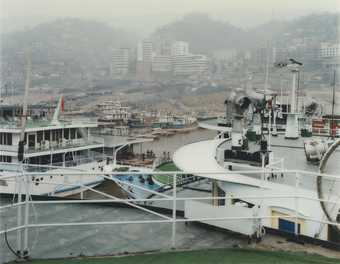
Not on display
- Artist
- Thomas Struth born 1954
- Medium
- Photograph, colour, on paper
- Dimensions
- Image: 945 × 1337 mm
- Collection
- Tate
- Acquisition
- Purchased with assistance from the Friends of the Tate Gallery 1995
- Reference
- P77745
Summary
The Shimada Family, Yamaguchi, Japan 1986 is one of an ongoing series of domestic group portrait photographs that Thomas Struth began making in the mid 1980s. He had previously gained recognition for his black and white photographs of the urban environment. These works were notable for their stage-like emptiness and their concentration on architectural surfaces. However, despite the change of subject matter, the group portraits reflect his continuing desire to make carefully considered images, which present the scene before the camera in an objective manner. Compositions are simple and digital manipulation is avoided. Struth has stated: 'for me it is more interesting to try and find out something from the real than to throw something subjective in front of the audience.' (Quoted in Minelli p.190.)
Struth started making the group portraits, some of which are in colour and others in black and white, while staying with friends as he travelled the world working on the street scenes. In an interview he has stated: 'The first two portraits I made came from purely personal incentives; on trips to Scotland and Japan I lived with families for a couple of weeks, and at the end of the trip I wanted to take a photo of the family group as a remembrance.' (Quoted in Buchloch p.29.) The resulting images were the products of a long and self-conscious process of discussion and collaboration. Struth would describe the spatial limits of the image and then encourage the sitters to select the setting and their position within the frame. He would ask them to group themselves together and look directly at the camera, thus referring to the way families photograph themselves. To obtain maximum focus and detail he employed long exposure times. This meant that in order to avoid blurring, the sitters had to choose poses which they would be able to hold without moving. As a result Struth's group portraits often appear very static, evoking the conventions of nineteenth century portrait photography. Struth continued to use this method for all the later group portraits, whether of friends or acquaintances.
In The Shimada Family, Yamaguchi, Japan 1986 the family have chosen to be photographed in the landscape. They are grouped informally amidst the rocky boulders and shrubs of a traditional Japanese garden. They all wear 'western' clothes except the older woman and the child who are dressed in kimonos. The members of the family are composed and self contained, their faces inscrutable as they look towards the camera. They all stare straight ahead, appearing to look out of the image and thus echoing the gaze of the spectator who looks in at them.
Struth maintains a respectful distance, presenting an image of the sitters' physical presence and weight. He does not offer a portrait of psychological depth but rather concentrates on appearances. In this he deliberately distances himself from much portrait photography which attempts to capture a fleeting, revealing moment or expression. Discussing Struth's work, the critic Richard Sennett has written: 'We relate to these images as we might appreciate strangers in a crowd; we feel their presence without the need to transgress boundaries by demanding intimacy or revelation people guard their separateness even as they present themselves directly to us.' (Sennett p.94.) Struth's portraits encourage contemplation and investigation, inviting the viewer to reflect upon the limits of his or her knowledge of other people. Like Struth's street scenes they are intended to 'give pause' so as to bring about 'a move to investigative viewing' which is also a 'call to interact.'(Quoted in Buchloh p.31.)
Further Reading:
Richard Sennett, Thomas Struth: Strangers and Friends, exhibition catalogue, Institute of Contemporary Art, London 1994
Giovanna Minelli, Another Objectivity, exhibition catalogue, Centre National des Arts Plastiques, Paris 1989, pp.189-194
Benjamin Buchloh, Portraits: Thomas Struth, exhibition catalogue, Marian Goodman Gallery, New York 1990, reproduced (colour) plate 9
Imogen Cornwall-Jones
September 2001
Does this text contain inaccurate information or language that you feel we should improve or change? We would like to hear from you.
Explore
- architecture(30,960)
-
- garden structures(1,939)
-
- garden(1,191)
- emotions and human qualities(5,345)
-
- contemplation(141)
- photographic(4,673)
- clothing and personal items(5,879)
-
- kimono(6)
- child(1,324)
- groups(310)
- cities, towns, villages (non-UK)(13,323)
-
- Yamaguchi(1)
- Japan(205)
- dress: nations/regions(272)
-
- Asia(17)
- family(1,081)
- Japanese(128)
You might like
-
Joseph Beuys Joseph Beuys: Multiples. Galerie Ilverich
1981 -
Thomas Struth Bankside 5, London 1995
1995 -
Thomas Struth Salzmannstrasse, Leipzig 1991
1991 -
Thomas Struth Hermannsgarten, Weissenfels 1991
1991 -
Thomas Struth Graves at the Sophienkirche, Grosse Hamburger Strasse, Berlin 1992
1992 -
Thomas Struth National Gallery I, London 1989
1989 -
Thomas Struth Galleria dell’Accademia I, Venice 1992
1992 -
Thomas Struth Shinju-ku (Skyscrapers), Tokyo 1986
1986 -
Thomas Struth Shinju-ku (TDK), Tokyo 1986
1986 -
Thomas Struth The Late Giles Robertson (with Book), Edinburgh 1987
1987 -
Thomas Struth Vico dei Monti, Naples 1988
1988 -
Thomas Struth Via Giovanni Tappia, Naples 1989
1989 -
Thomas Struth The Smith Family, Fife, Scotland 1989
1989 -
Thomas Struth Kyoko and Tomoharu Murakami, Tokyo 1991
1991 -
Thomas Struth Boats at Wushan, Yangtse River
1997

